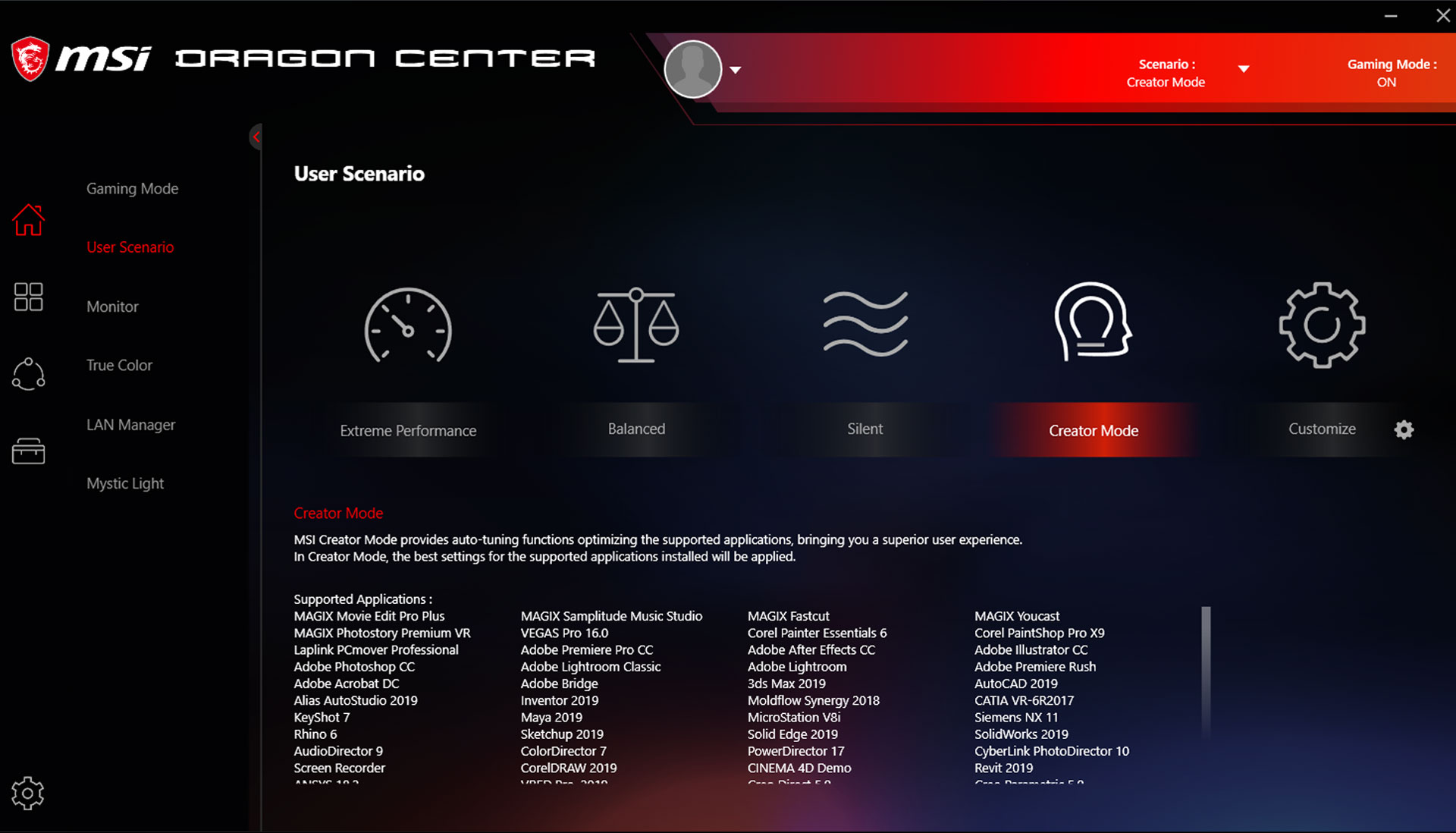

Msi lighting software software#
Clever hardware & software tools, created to keep you one step ahead of the competition and boost your skills. Outsmart and outperform your opponents in-game using an array of unique MSI GAMING tools. Hysteresis also makes your fans spin up fluently to make sure your system stays silent, no matter what. MSI FAN headers automatically detect fans running in DC or PWM mode for optimal tuning of fan speeds and silence. Works with certified Mystic Light Sync products: Feel like using a different color? Completely change the look of your system in 1 second! Select any of the colors from the palette using your smartphone or the MSI Gaming App to match your system style. Optimized gaming audio using best componentsĬonnect external RGB strips and sync other RGB capable gear to set up your own color scheme using only 1 application: Mystic Light Sync. NVMe support, up to 32 Gb/s using PCI-Express Gen3 x4 Protecting VGA cards against bending and EMI Optimized traces and isolated memory circuitry Of course, the lighting can also be disabled altogether.Ĭolor accuracy and vibrancy are excellent throughout.Leading heatsink design, for maximum cooling Colors, transition speed, and brightness can be further customized. If other MSI devices are present, the lighting may be synchronized with them. Three pre-defined lighting effects are available: Steady, Rainbow, and Breathing, along with a custom mode. LightingThe Clutch GM41 Lightweight has but a single lighting zone, which is the logo at the back. Using this tool, I was able to get rid of all remnants of Dragon Center. Upon exiting the application, several processes with a RAM footprint of 67 MB keep running.įor uninstalling Dragon Center, I recommend using the official uninstall tool provided by MSI, which can be found in this not-so-official looking Google Drive. When minimized to the system tray, a RAM footprint of 72 MB is averaged. However, after having opened certain tabs (such as Mystic Light), this figure may go up by as much as 100 MB for an average of around 200 MB in total. On my system, the software had a minimum RAM footprint of 107 MB. When applied, all settings are saved to the on-board memory, so the software does not need to be running (or be installed) all the time. Lastly, profile management is available, too. As the 3389 is capable of increments of 50 CPI, the restriction to 100 CPI increments is an artificial one. CPI adjustment is possible for five levels and at a range of 100 to 16,000 CPI, in increments of 100. The second tab includes options for polling rate (125/250/500/1000 Hz), angle snapping (on/off), and lift-off distance (high/low).

The first one has button remapping, to mouse, macro, and media functions. Curiously, when having the latter option open, Dragon Center cannot be minimized directly rather, just by clicking on its icon on the taskbar.Īll settings are presented across two tabs. Mystic Light concerns lighting settings and is detailed below.

Annoyingly, any already applied non-default ICC profiles will be reset on every system start-up and need to be manually re-enabled, which can get quite tedious.
Msi lighting software windows#
The first one is entirely unrelated to mouse functionality and merely allows one to apply custom Windows color profiles. On the home screen, three options are laid out at first: True Color, Mystic Light, and Gaming Gear. Upon opening Dragon Center, one is first greeted by a login screen, but that one can be safely skipped without any resulting restrictions to functionality. The installation went down smoothly, and although the number of running background processes and their RAM footprint isn't exactly to my liking, core functionality is pretty decent. However, and to anyone's surprise, my experience with Dragon Center wasn't all that bad. And much like Armoury Crate, Dragon Center has a bit of a bad reputation.

Much like ASUS Armoury Crate, MSI Dragon Center is a UWP-integrated app for all things MSI.


 0 kommentar(er)
0 kommentar(er)
